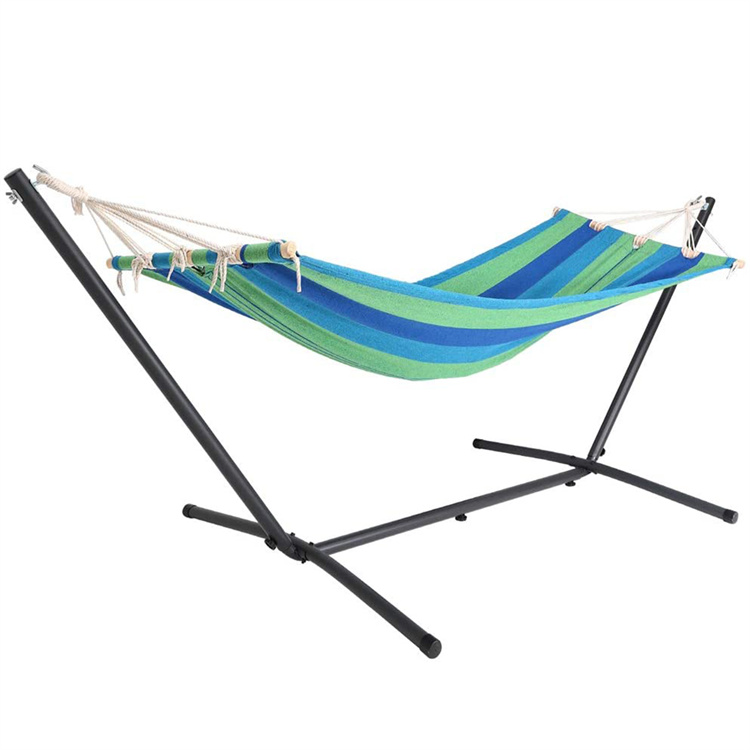Exploring the Materials of Outdoor Hammocks with Stands: A Guide to Durability and Performance
2024-01-02
Introduction:
When it comes to outdoor relaxation, few things beat the soothing sway of a hammock. Choosing the right hammock with a suitable stand is essential for a comfortable and durable outdoor experience. In this blog, we will delve into the materials commonly used in the construction of outdoor hammocks with stands and explore how these materials impact the durability and performance of these beloved relaxation devices.
1. Cotton: A Classic Choice for Comfort
Cotton is a popular choice for the fabric of hammocks due to its soft and breathable nature. It provides a comfortable surface for lounging, making it a classic option for those seeking a cozy retreat in their outdoor spaces. However, while cotton is comfortable, it may require more maintenance and is generally less resistant to the elements than other materials.
2. Polyester: Durable and Weather-Resistant
Polyester hammocks are known for their durability and resistance to weather conditions. They are less prone to fading, mold, and mildew, making them an excellent choice for outdoor use. Additionally, polyester dries quickly, making it suitable for areas with varying weather patterns.
3. Nylon: Lightweight and Strong
Nylon is a lightweight and strong material often used in hammock construction. It's resistant to mildew and dries quickly, making it an ideal choice for those who plan to take their hammock on camping trips or other outdoor adventures. Nylon is also known for its strength, providing reliable support.
4. Steel: Sturdy and Stable Stand Material
The material of the hammock stand is equally crucial for durability and performance. Steel stands are favored for their sturdiness and stability. They are resistant to rust, making them suitable for outdoor use. Powder-coated steel stands offer additional protection against the elements, enhancing their lifespan.
5. Aluminum: Lightweight and Corrosion-Resistant Stands
For those prioritizing portability without sacrificing durability, aluminum stands are an excellent choice. They are lightweight, making them easy to move and transport, while still providing reliable support. Additionally, aluminum is naturally corrosion-resistant, ensuring a longer lifespan for the stand.
6. Wood: Aesthetic Appeal with Considerations
Wooden stands add a touch of natural beauty to outdoor spaces. However, the type of wood used can greatly affect durability. Hardwoods such as teak or cedar are resistant to decay and insects, making them ideal choices. Regular maintenance, like applying a protective sealant, is often necessary to preserve the wood.
Conclusion:
In the world of outdoor hammocks with stands, the choice of materials plays a significant role in determining the overall durability and performance of these relaxation havens. Whether opting for the classic comfort of cotton, the durability of polyester, or the strength of nylon, paired with a sturdy stand made of steel or the natural beauty of wood, understanding these material choices will help you make an informed decision for your outdoor oasis. Take the time to consider your preferences, climate, and intended use to find the perfect combination that will elevate your outdoor lounging experience.



